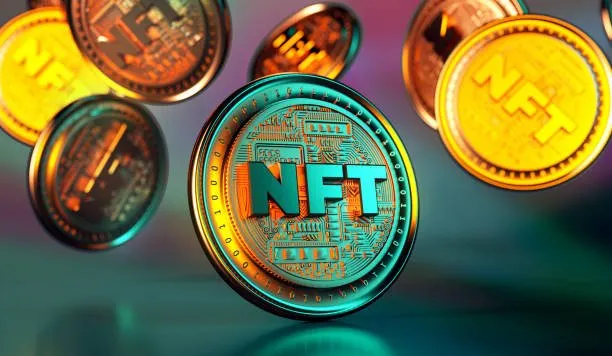
NFTs, or non-fungible tokens, have recently gained attention as the newest trend in the gaming and art industries. NFTs are essentially distinct digital assets that are confirmed on a blockchain and are non-replicable. These are being sold for exorbitant prices and can represent anything from artwork to in-game stuff. While some are dubious about the possibilities of NFTs, others view them as a fresh start in the creative and gaming industries.
This article will examine the possibilities of NFTs in gaming and the arts as well as the issues and drawbacks related to them.
NFTs in Art
Traditional auction houses and galleries have long dominated the art market. NFTs, however, have given artists a new avenue for reaching out to collectors and selling their goods directly. Artists can confirm the legitimacy and ownership of their work by making an NFT of it, and collectors can buy and trade the NFT as a one-of-a-kind digital asset.
The fact that NFTs in the art market enable better control and transparency for both artists and collectors is one of their main advantages. There is no need for middlemen like galleries or auction houses because artists can establish their own prices and receive a cut of future sales. Additionally, collectors may be confident that the item they are purchasing is genuine and one-of-a-kind because NFTs are confirmed on a blockchain.
NFTs in the arts also have the potential to raise the value of the piece of art itself, which is another benefit. An artist can give a piece of work a sense of rarity and originality that may not have previously existed by creating an NFT of it. When the artwork is sold at conventional auction houses or galleries, this may also result in higher prices.
NFTs in art do, however, have drawbacks and controversy surrounding them. One of the biggest worries is that the market may be becoming a bubble due to the excitement around NFTs. Several industry analysts think that the market may eventually collapse because of the absurd prices being paid for NFTs. Many artists and collectors can be left with useless digital assets as a result of this.
The effects of NFTs on the environment are also a source of worry. NFTs need a lot of energy to build and maintain because they are confirmed on a blockchain. Some artists and environmentalists have expressed their disapproval of this since they believe that NFTs are a waste of materials.
NFTs in Gaming
NFTs are employed outside of the realm of art. They are also creating a stir in the video game sector. In fact, some professionals think that NFTs may fundamentally alter how we enjoy and value games.
In the world of video games, NFTs can stand in for everything from individual game objects to entire game worlds. Developers may give players a sense of ownership and influence over the games they play by making NFTs of these assets. For instance, gamers can purchase and sell NFTs of virtual creatures in games like Axie Infinity that can be utilized to engage in player-versus-player combat. Because to this, the game has a bustling economy, with certain NFTs fetching thousands of dollars.
The ability of NFTs to offer new revenue streams for game producers is one of their benefits. Developers may be able to get a cut of every sale by letting players buy and sell NFTs. Moreover, creators may raise the value of the game itself by producing NFTs of in-game products, which could result in increased sales and greater earnings.
NFTs in gaming, like NFTs in art, are not without drawbacks and controversy, though. The usage of NFTs in games raises a number of issues, one of which being the possibility of a pay-to-win system where players who can afford to purchase the most expensive NFTs have an unfair edge over other players. Players who are unable to afford to spend a significant amount of money on NFTs may find their gaming experience to be less enjoyable as a result.
Another issue is the possibility that the use of NFTs in gaming could increase gambling and addiction. Players may be more likely to invest a lot of time and money trying to acquire NFTs because they are uncommon and may increase in value. This might cause bad gaming habits and, in some circumstances, addiction.
Potential Impact of NFTs
There is no doubting that NFTs have the ability to drastically alter the way we view and value art and gaming, despite the issues and drawbacks that come with them. NFTs could upend conventional auction houses and galleries by establishing a new market for one-of-a-kind digital assets, giving artists more control over their production and possibly raising the value of the artwork itself. NFTs in the gaming industry might provide users a sense of control and ownership over the games they play while generating new income streams for game developers.Yet, it's crucial to approach NFTs critically, just as you should with any new technology or trend. The excitement around NFTs could cause a financial bubble, and there is good reason to be concerned about how they will affect the environment. Also, players who cannot afford to spend a lot of money on exclusive digital assets may find using NFTs in gaming to be a less satisfying experience.
Conclusion
Finally, non-fungible tokens have the potential to completely transform the gaming and art industries. NFTs could allow artists and gamers more control over their work while also perhaps raising the value of the actual artwork and games by establishing a new market for unique digital goods. NFTs, however, should be viewed critically, and one should be aware of the issues and drawbacks related to them. It's crucial to consider the possible advantages and hazards of using NFTs, as with any new technology or trend, and to do so in a way that is sustainable and responsible.
IMAGE SOURCE